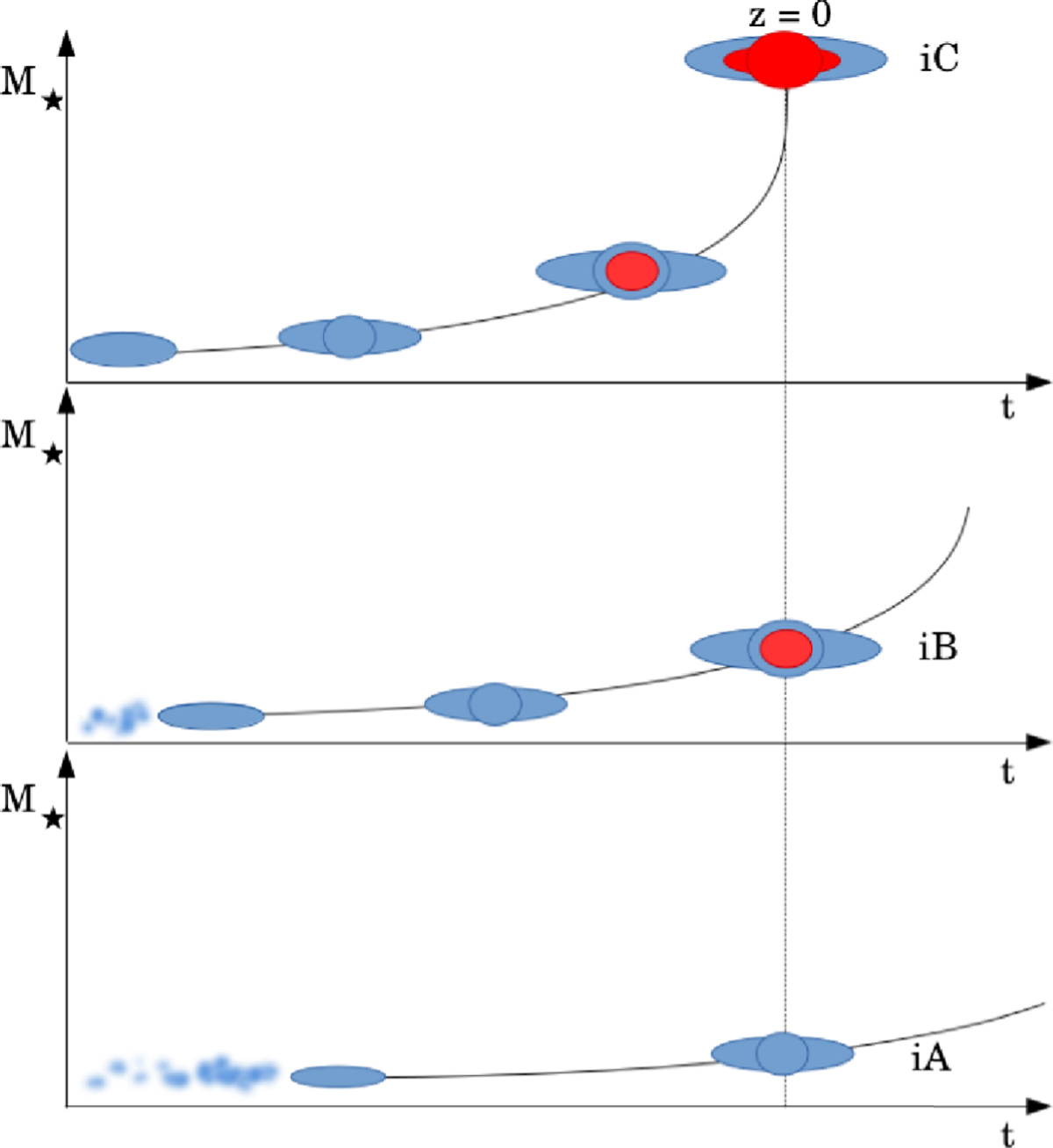Fig. 8

Schematic illustration of the scenario proposed in Sect. 4.1.2: the three LTGs in
Fig. 5 may be regarded as morphological snapshots in a sequence of increasing bulge stellar mass
![]() , age
, age ![]() , surface density Σ⋆,B and
⟨δμ9G ⟩. The progenitors of high-mass LTGs (e.g., NGC 0776, i.e., systems in the
⟨δμ9G ⟩ interval iC; ≥−0.5 mag) form in more massive halos and experience the dominant phase of their bulge assembly earlier than 9 Gyr ago (vertical line). Conversely, the precursors of low-⟨δμ9G⟩ (≤−1.5 mag; i.e., iA) LTGs, such as IC 0776, assemble at a calm pace within lower-mass halos and undergo an overall retarded structural and chemical evolution toward intermediate-⟨δμ9G⟩ LTGs (iB), such as NGC 0001. Once the bulge has grown to
, surface density Σ⋆,B and
⟨δμ9G ⟩. The progenitors of high-mass LTGs (e.g., NGC 0776, i.e., systems in the
⟨δμ9G ⟩ interval iC; ≥−0.5 mag) form in more massive halos and experience the dominant phase of their bulge assembly earlier than 9 Gyr ago (vertical line). Conversely, the precursors of low-⟨δμ9G⟩ (≤−1.5 mag; i.e., iA) LTGs, such as IC 0776, assemble at a calm pace within lower-mass halos and undergo an overall retarded structural and chemical evolution toward intermediate-⟨δμ9G⟩ LTGs (iB), such as NGC 0001. Once the bulge has grown to ![]() (10;9), AGN-driven feedback initiates a gradual cessation of SF (depicted in red), while the bulge mass may continue increasing through inward stellar migration from the disk and multiple minor dry mergers.
(10;9), AGN-driven feedback initiates a gradual cessation of SF (depicted in red), while the bulge mass may continue increasing through inward stellar migration from the disk and multiple minor dry mergers.
Current usage metrics show cumulative count of Article Views (full-text article views including HTML views, PDF and ePub downloads, according to the available data) and Abstracts Views on Vision4Press platform.
Data correspond to usage on the plateform after 2015. The current usage metrics is available 48-96 hours after online publication and is updated daily on week days.
Initial download of the metrics may take a while.


